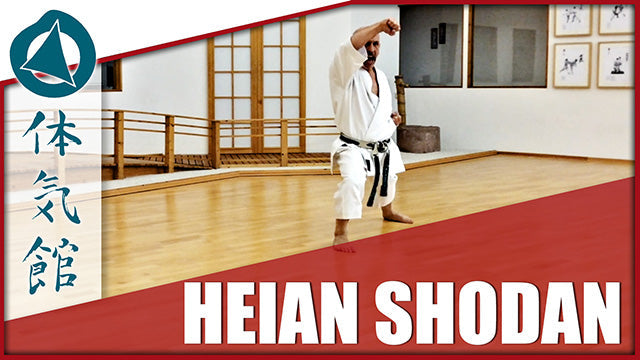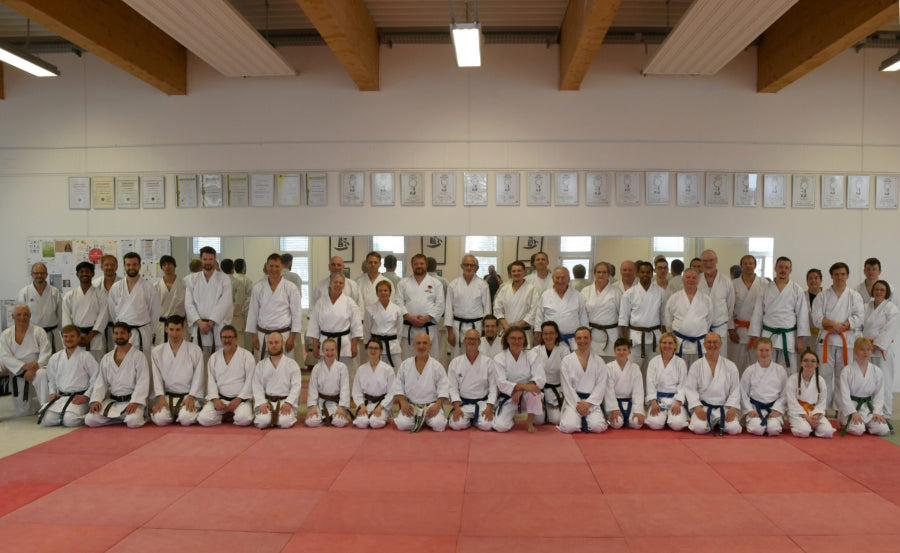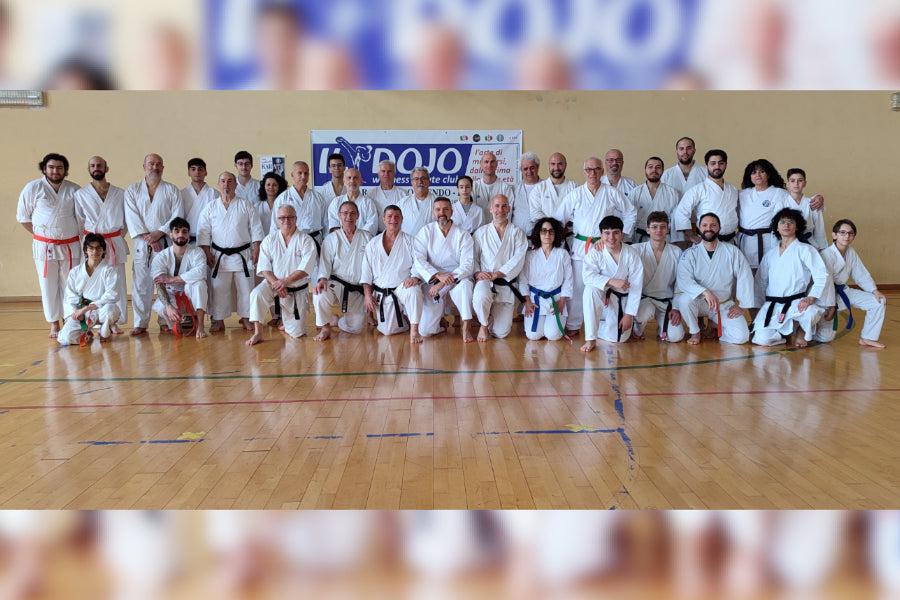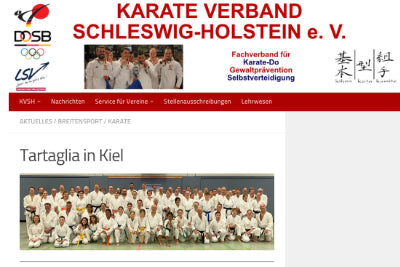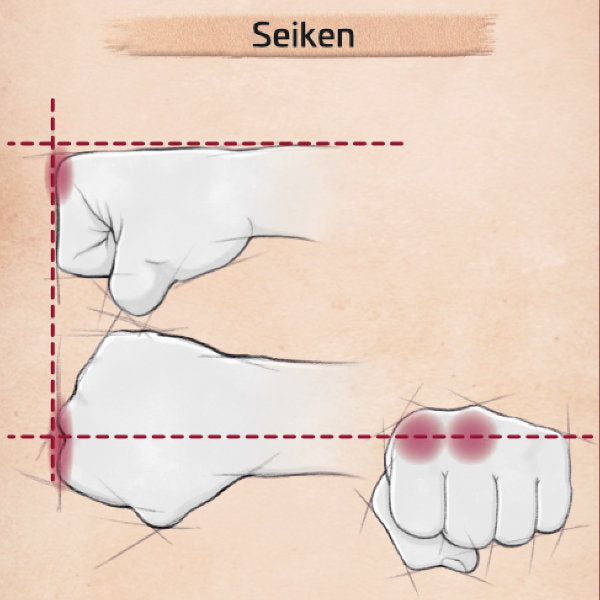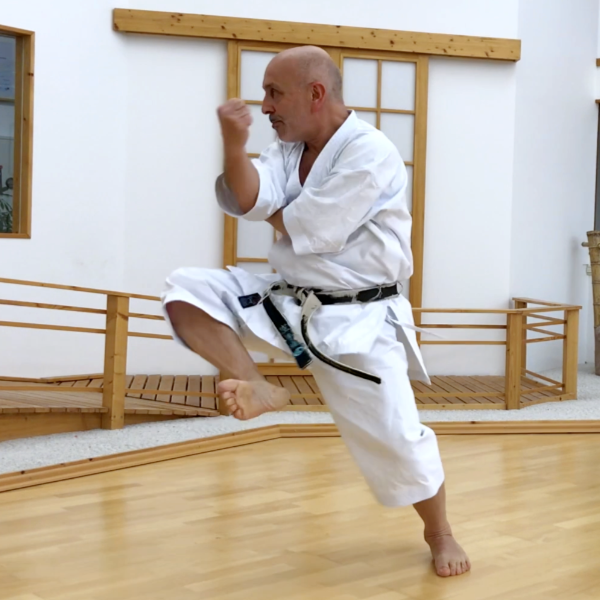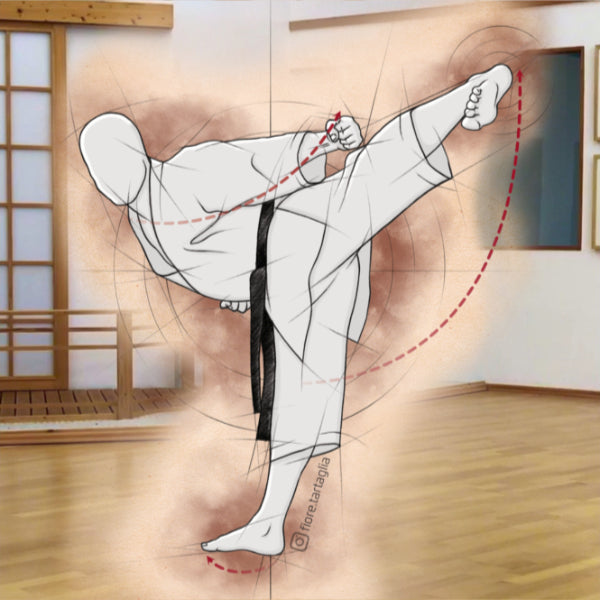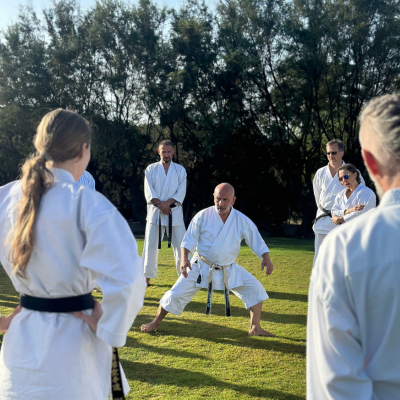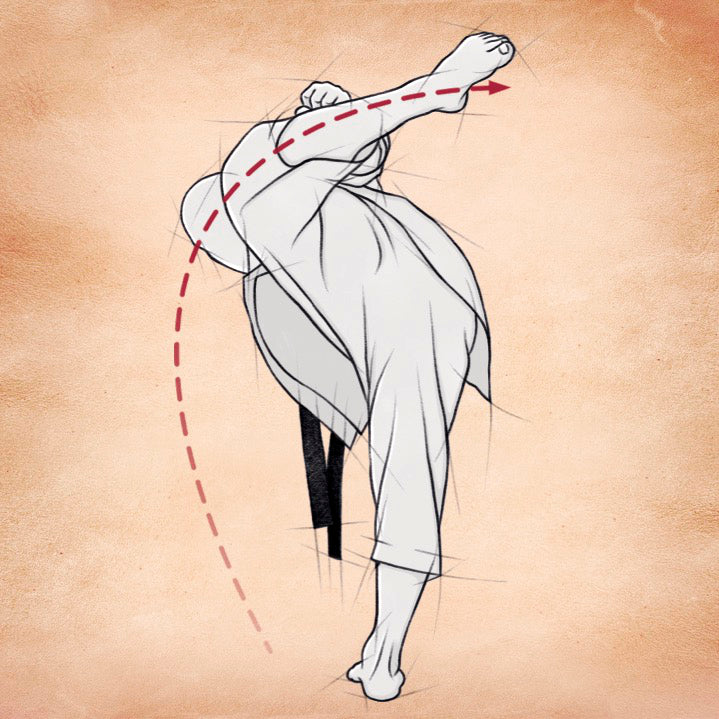HEIAN NIDAN – PEACE AND TRANQUILITY, 2ND STAGE.

A non-linear development
The technical differences between the first two kata of the Heian series are enormous. The inexperienced student who has mastered the first kata will face a much greater technical challenge when studying the Heian nidan.
Several new techniques, some of which are performed with both hands simultaneously, and even a combination of kick and fist, pose challenges that push the inexperienced student to the limits of his coordination abilities.
This allows us to understand that the study of karate, although based on rational concepts, is not always linear. This is an important aspect of practice, since a martial art, as such, contains within itself highs and lows, fullness and emptiness, in other words, contrasts. The didactic aspect goes beyond the kata themselves and enters the realm of kumite: a fight does not have a linear progression! The ability to adapt oneself, and thus also one's subconscious, to sudden changes is an essential quality that distinguishes a good fighter. Developing the ability to adapt spontaneously to change begins with the technical differences of the first two Heian kata.

A challenging beginning
The first example of the coordinative complexity of Heian Nidan is the first techniques (numbers 1 to 6). They also have a valid application in self-defense, although this is a topic for the karateka who is engaged in learning the kata, which will be discussed later.

Sen no sen – Possible application
For the first time, a leg technique and an arm technique are performed simultaneously (Sen no sen – No. 7). This requires coordination and balance. In this combination, the arm technique (Uraken uchi) deflects a punch to the head while simultaneously countering with Yoko geri keage under the armpit of the attacking arm or on the chin.
Recommendation
When performing this combination, it is recommended – after withdrawing the techniques – to keep your balance on one leg for a short time in order to have time to swing for the next technique (Shutō uke).

Gyaku hanmi
A certain degree of body control is also required for the defensive techniques performed in the Gyaku-hanmi stance – hyperrotated upper body rotation (nos. 16 and 19) – and combined with other techniques. Furthermore, the Gyaku-hanmi stance in stance no. 19 entails a change in Zenkutsu dachi: the stance is shortened by approximately one foot's length. This is due to the strong hip rotation required to enable an effective defensive technique with the rear arm. This should be practiced very carefully so that the kata ends exactly where it began. With this movement, it is also important to avoid lifting the stance by shortening it, in order to keep the hips at the same height.

The high level of difficulty of the applications
Heian nidan represents a clear improvement over Heian shodan in the bunkai area, as well as in the execution of the kata itself.
The defensive situations force the student to decide where and with which technique to counterattack.
If the opponent is larger, it is often advisable to use a Chūdan counter technique.
However, if it is smaller, it makes sense to counter Jōdan, completely independent of the solutions presented here.
Learning effect
The initial techniques of the kata (up to No. 3) are repeated in reverse (Nos. 4 to 6). It is advisable to practice two different applications with varying degrees of difficulty to increase the learning effect. The additional technique, Fumikiri to the thigh (No. 7), serves to successfully complete the sequence even if the Yoko geri keage could not be placed as the final technique.

Oi-komi technique
The interpretation of Technique No. 22 (Morote uke) is intended here as a jodan attack. However, it could also be used as a defense against the opponent's elbow if they attack with a right oi-zuki. Executed strongly and precisely as an "oi-komi" technique, the Morote uke can also be used as a counterattack.

Stick attacks
The final sequence of the kata involves a defense against a stick combination. For the first time, the stick appears as a possible weapon. Of course, an unarmed defense can also be considered at this point.
Defend near the hands
In principle, it is important to defend against stick attacks near the opponent's hands (or on the hands themselves) in order to avoid injuring your own arms and hands.
This requires a forward defense in order to get close to the opponent so that you can then act yourself.
In addition, the stick at the tip is the most dangerous.
When training with the pole, both good control and professional guidance are necessary to avoid injuries.
Duration: about 40 seconds
